You are using an out of date browser. It may not display this or other websites correctly.
You should upgrade or use an alternative browser.
You should upgrade or use an alternative browser.
Star Wars Episode VII & Beyond On-going Discussion (Disney+ adding 10 NEW STAR WARS SERIES)
- Thread starter playahaitian
- Start date
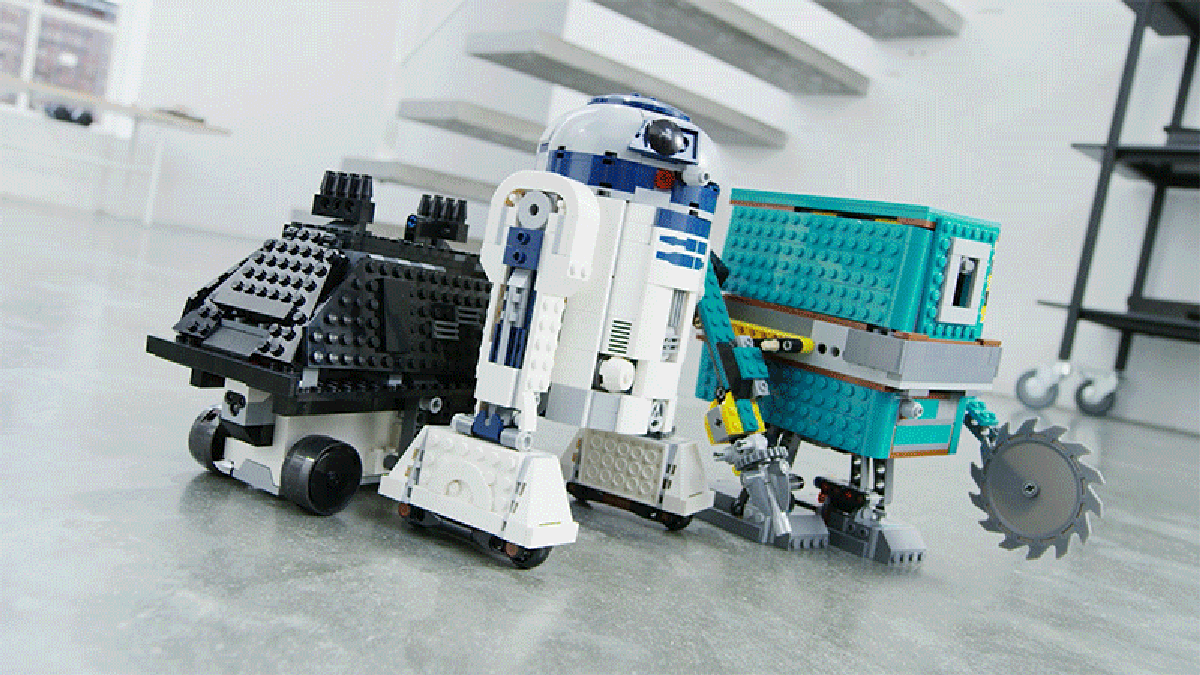
These Lego Star Wars Droids Might Be the Toy Robots Everyone's Been Looking For
Consumer-focused robots have been having a bit of a hard time in recent years. Just last week, Anki, maker of the adorable Cozmo and Vector bots, was the latest robot maker to go under as consumers hesitated to spend $250 on an automaton that didn’t really do anything. Lego’s latest creation...
 gizmodo.com
gizmodo.com
Damn. Had a brother worried there for minute.
Damn. Had a brother worried there for minute.
OK I wasn't the only one
Baby Yoda Has a Real Name and You’re Not Gonna Like It
By Rebecca Alter@ralter
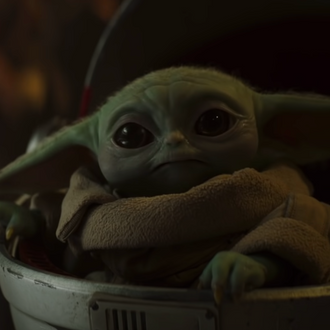
By Rebecca Alter@ralter

Meet Grogu. Photo: The Mandalorian/Disney+
The powers that be at Disney+/LucasFilm/the Galactic Empire heard how nobody liked that Baby Yoda’s “official name” is “The Child,” and decided to… absolutely double-down with a way more ridiculous official name. Obviously, spoilers ahead. On the latest episode of The Mandalorian, the character Ahsoka Tano, played by Rosario Dawson, reveals that the little green creature we’ve come to know and love as “Baby Yoda” has a name, and that name is Grogu. Grogu. When Din Djarin addresses him as such, he makes a little chirping noise of recognition, as if to say, “yep, that’s me, Grogu, a good name that I like a lot!” It’s pronounced “grow-goo,” as in, “Robin Williams in Flubber likes to grow goo.” Here are some things Baby Yoda’s name, Grogu, reminds us of:
-Goku
-Gogurt
-Gru
-Goop
-Walter Goggins
-Googie (the midcentury futurist architectural style)
-Grody (Valley Girl-speak)
-Goomby (purposefully dumb-sounding alien name from Rick and Morty)
-Miss Grotke (the hippie teacher from Disney’s Recess)
-Nazi-aligned Trumpist Sebastian Gorka
-Grogans (a pub in Dublin); and, of course,
-Goo goo (thing babies say)
So that’s that. Do with this knowledge what you will. Baby Yoda is Grogu now, because Rosario Dawson said so.
The powers that be at Disney+/LucasFilm/the Galactic Empire heard how nobody liked that Baby Yoda’s “official name” is “The Child,” and decided to… absolutely double-down with a way more ridiculous official name. Obviously, spoilers ahead. On the latest episode of The Mandalorian, the character Ahsoka Tano, played by Rosario Dawson, reveals that the little green creature we’ve come to know and love as “Baby Yoda” has a name, and that name is Grogu. Grogu. When Din Djarin addresses him as such, he makes a little chirping noise of recognition, as if to say, “yep, that’s me, Grogu, a good name that I like a lot!” It’s pronounced “grow-goo,” as in, “Robin Williams in Flubber likes to grow goo.” Here are some things Baby Yoda’s name, Grogu, reminds us of:
-Goku
-Gogurt
-Gru
-Goop
-Walter Goggins
-Googie (the midcentury futurist architectural style)
-Grody (Valley Girl-speak)
-Goomby (purposefully dumb-sounding alien name from Rick and Morty)
-Miss Grotke (the hippie teacher from Disney’s Recess)
-Nazi-aligned Trumpist Sebastian Gorka
-Grogans (a pub in Dublin); and, of course,
-Goo goo (thing babies say)
So that’s that. Do with this knowledge what you will. Baby Yoda is Grogu now, because Rosario Dawson said so.
Anyone playing Squadrons..? Fleet Battles is a good mode
Great fucking episode. After watching this episode. I was thinking of how good Star Wars episodes 7,8, and 9. Would have been if Jon favreau and Dan feigie had been involved.
Honestly, episode was a little meh. Last weeks was more entertaining to me.
I liked Dawson's take on Ahsoka and seeing Michael Beihn was cool, but this episode was a little boring. Especially with it being o w of the longest running episodes of the Mandalorian so far.
Liked learning the Child's name and was surprised to hear Thrawn's name dropped. I'm wondering if the next Jedi they meet up with is Mace Windu or a younger Skywalker.
So far the third episode followed by the fourth have been the highlights for me this season. This episode, although it answered some questions and had one of the best characters appear, was slightly better than the one with the Frog Lady and ice spiders.
Also, hated how dark this episode appeared. I know it's to hide special effects and all but It could have been a little more brighter.
I liked Dawson's take on Ahsoka and seeing Michael Beihn was cool, but this episode was a little boring. Especially with it being o w of the longest running episodes of the Mandalorian so far.
Liked learning the Child's name and was surprised to hear Thrawn's name dropped. I'm wondering if the next Jedi they meet up with is Mace Windu or a younger Skywalker.
So far the third episode followed by the fourth have been the highlights for me this season. This episode, although it answered some questions and had one of the best characters appear, was slightly better than the one with the Frog Lady and ice spiders.
Also, hated how dark this episode appeared. I know it's to hide special effects and all but It could have been a little more brighter.
Nah Mace dead(if theyre sticking to canon)..Maybe Ahsoka will reveal what happened to Ezra and ThrawnLiked learning the Child's name and was surprised to hear Thrawn's name dropped. I'm wondering if the next Jedi they meet up with is Mace Windu or a younger Skywalker.
We never actually saw Mace die. He was thrown out the window....Nah Mace dead(if theyre sticking to canon)..Maybe Ahsoka will reveal what happened to Ezra and Thrawn
He could have survived. He's a Jedi. We've seen many Jedi fall from high places and survive.
What time period is it set in..? Original Trilogy/EU..? Old Republic..? or Sequel Trilogyi got an idea for a canon story but the legal dept at disney aint responding. it's too bad, I got a really dope concept that has nothing to do with established characters
I watched emergency awesome latest video, and that is who he thinks Ahsoka was most likely referring to.Nah Mace dead(if theyre sticking to canon)..Maybe Ahsoka will reveal what happened to Ezra and Thrawn
Last edited:
25 years after the Clone WarsWhat time period is it set in..? Original Trilogy/EU..? Old Republic..? or Sequel Trilogy
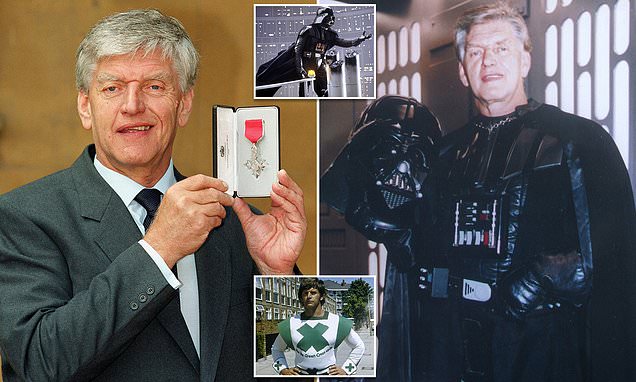
Darth Vader star dead at 85: British actor David Prowse dies
Dave Prowse, a former bodybuilder, was best known for playing the iconic super-villain in the original three George Lucas movies. He has died at the age of 85 after a short illness.
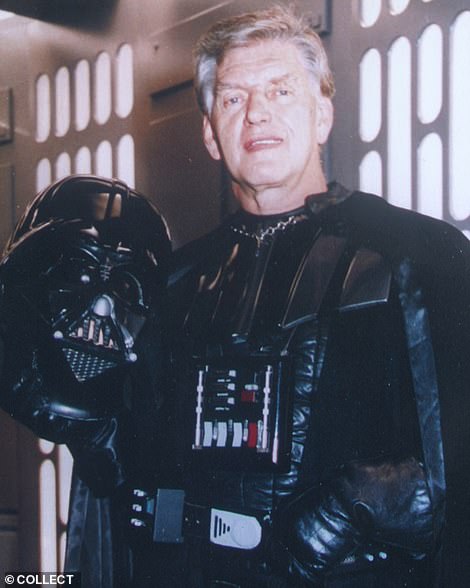
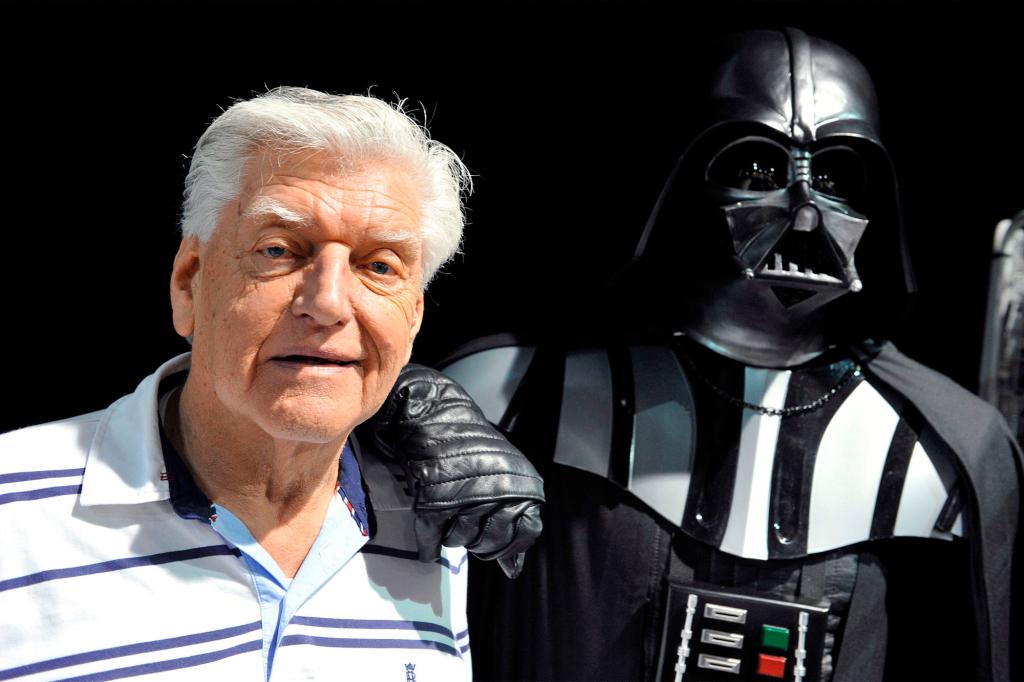
David Prowse, the man behind Darth Vader, dead at 85
David Prowse, the former body-builder who played Darth Vader in the original “Star Wars” trilogy, is dead at the age of 85. The English-born actor died early Sunday, according to his ma…
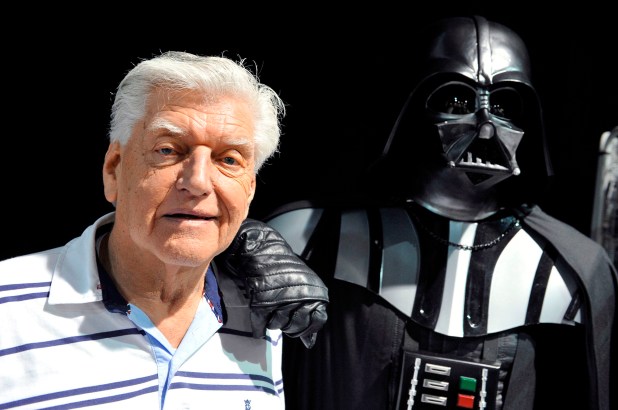
I’m forever grateful they didn’t use this audio.
Could you imagine if they went with his voice for the entire movie

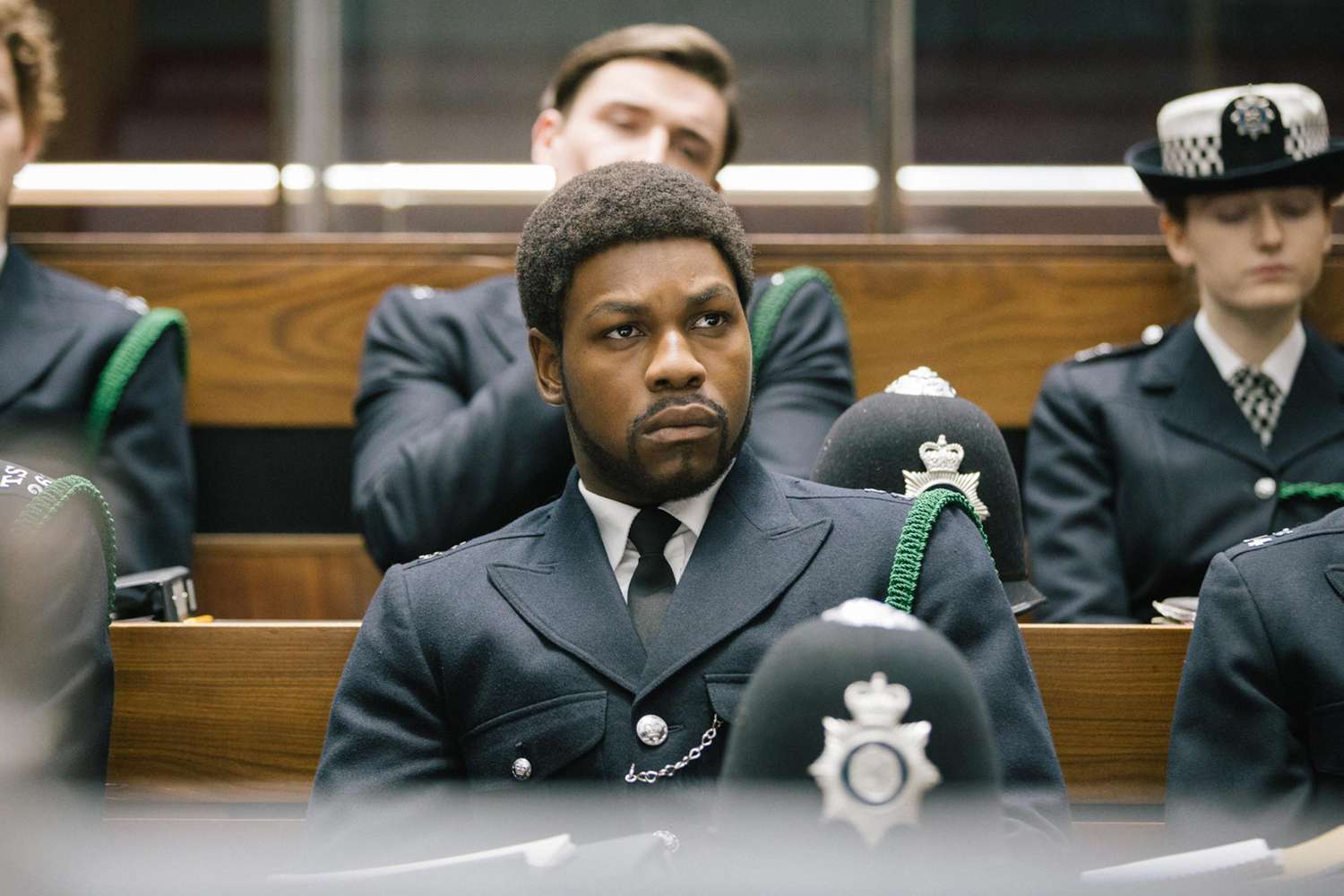
John Boyega is ready to be a force, both onscreen and off
John Boyega discusses taking on Steve McQueen's 'Red, White and Blue' and becoming a "voice of service."
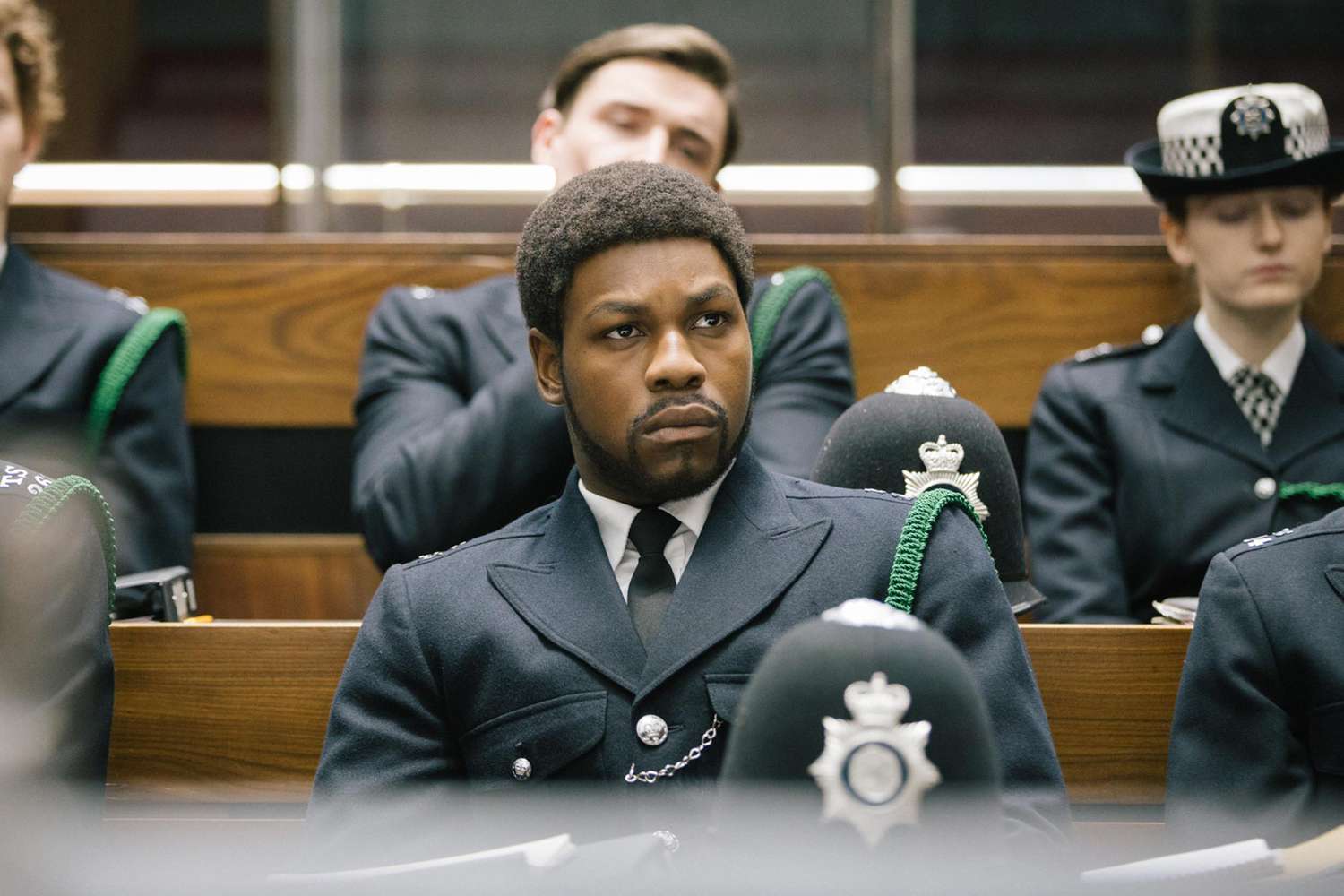
John Boyega is ready to be a force, both onscreen and off
By Derek Lawrence
December 02, 2020 at 12:45 PM EST
ADVERTISEMENT
SaveFBTweetMore
CREDIT: S GOODWIN/AMAZON STUDIOS
John Boyega has found his voice.
Back in June, as protests broke out around the world following the death of George Floyd, the 28-year-old British actor attended such an event in London, where, with no prior notice, he was handed a megaphone and asked to speak. A visibly emotional Boyega declared, “Black lives have always mattered. We have always been important. We have always meant something. We have always succeeded regardless. And now is the time. I ain’t waiting." He would also add, "I don’t know if I’m going to have a career after this but, f— that," prompting filmmakers like Jordan Peele and Rian Johnson to show their support.
Shortly thereafter, in a candid interview with British GQ, Boyega slammed how the Star Wars franchise handled his character, Finn, and those played by other actors of color. “Like, you guys knew what to do with Daisy Ridley, you knew what to do with Adam Driver,” he said. “You knew what to do with these other people, but when it came to Kelly Marie Tran, when it came to John Boyega, you know f--- all. So what do you want me to say? What they want you to say is, ‘I enjoyed being a part of it. It was a great experience…’ Nah, nah, nah. I’ll take that deal when it’s a great experience."
Now, after spending the last three years wrapping up his Star Wars run and starring in the sci-fi blockbuster Pacific Rim: Uprising, Boyega is saying something with this art, too. The actor-producer was at a career crossroads when Oscar-winning filmmaker Steve McQueen (12 Years a Slave) came to him with Red, White and Blue, one of the five original films in McQueen's "necessary, important, and urgent" Small Axe collection.
Premiering Friday on Amazon Prime Video, the latest installment tells the true story of Leroy Logan, a young forensic scientist who decides to join the police force after his father is assaulted by officers. Believing he can make change from within, Logan faces the wrath of his father and fellow cops.
EW spoke to Boyega about having a personal connection to Red, White and Blue, expanding the global conversation of race, and becoming a "voice of service."
ENTERTAINMENT WEEKLY: What was it about Red, White and Blue that drew you in?
JOHN BOYEGA: I just think it was an interesting story. I grew up here in London and I still live here, so to be able to play a man who is very important to our community and who has done especially so much for the young people. I’ve seen his work, because growing up I had friends who were mentored by him, so I know firsthand the positive impact that he’s had on various different lives in the U.K. So to be able to embody him, but to embody him at a time where he hadn’t come into the Leroy Logan that we know today. He was a young man in a very racist society and institution who was trying to navigate that space without the necessary support, and that interested me. And on top of that, Steve McQueen. I was at a crossroads, I had just finished a franchise, and so I just wanted to know what I could potentially do next and this felt like a great option.
So much of your last few years had been spent working on these giant special-effects films that are set in these futuristic worlds, so did you enjoy getting to come back down to earth so to speak? Do this really human story on a human level? Even though I did enjoy Red, White and Blue finding a way to make a Star Wars joke about you joining the force.
Right? Being in a scene, thinking, you know we can just force joke this lad. [Laughs] Wrong project! But I like to explore, that’s why between Star Wars VIII and Star Wars IX I did Detroit, or the reason why I’m playing a frantic, messed up lawyer in Naked Singularity. I just like jumping into different types of roles and characters and people.
You mentioned your friends being mentored by Leroy growing up, but, once you landed the role, did you get a chance to talk to him? If so, what were those conversations like?
Yeah, it was brilliant. We actually met up and had a nice long sit-down and we just spoke about his experience and were able to relate. Because I had a lot of experience in the youth clubs and school programs out here in South London and Leroy’s got a lot of experience with working with young people here, and we are just able to be like, “Yo, I’ve been to that institution, have you been there too?” And that was a connection that way, but then about getting into his mind: why, why make this decision, why let go of being a scientist and a stable life and a baby on the way and then decide to join the police force and put yourself in harm’s way? And so understanding his thinking was very, very cool.
Once he laid it out for you, how easy was it to get his mindset and understand this decision he made to pursue a new path that was controversial to many around him?
I definitely understand the perspective. And I don’t think everyone is made for it. I think we all have our different calling. But I don’t think that’s something that doesn’t help us, to have Black individuals on that side, who can add perspective and add safety to us and an understanding; it feels better than to have alien faces who perhaps won’t be able to relate and who could see things in the way that could lead to a negative outcome. So I understood those choices and I understood the conflict of it. It’s just real tricky. I know my job doesn’t need to conflict with my position, socially, whereas with Leroy Logan, it’s a hard pill to swallow.
I couldn’t help but be taken by this quote from Leroy in Red, White and Blue: “I just feel like someone’s got to be the bridge, and when you’re doing that, you just realize you’re alone.” I can’t imagine how isolating that must feel for someone to take that on. So, for you, what was it like playing the weight of that?
I felt the change in that line, and that was such a natural scene to film. Steve kind of left us alone in this café and had us have this conversation. For me, I relate to that point as Leroy. Like I understand why this guy is saying it, because he is alone, statistically. How many Black police officers are in the streets? And they definitely didn’t have enough to give him a Black partner or whatever it is he needed for those specific communities. And, in a sense, he became the poster boy, too. It’s a very isolating experience, so I understand why he said that and the loneliness that he felt in that moment, and that’s what I played.
We so often see the exploration of race and racism in America played out on the big screen or on television. As you mentioned, you even did it with Kathryn Bigelow's Detroit. But what’s it like exploring race in the U.K., which are stories that don't make it over to the States as much? I talked to Steve about this and his big thing was “America doesn’t have a monopoly on anything, especially not race.”
It definitely helps in expanding the global conversation when it comes to race. And I know America is such a big place, man, you all can stay in the same nation and have two different types of weather. All of a sudden you’re in the mountains of Utah in the snow and then you can say I’m going to a beach vacation and be in Miami. I need to travel out for that because Brighton doesn’t have that kind of color. So if you see how small we are, to be able to then share our stories and to be able to basically remove the veil, and even for African Americans as well to see the, “Oh, these are the similar lines,” it definitely helps in understanding our several different issues as we come up through society.
The headline of this Leroy's story is what he has done and what he has faced, but, to me, the father-son relationship really is the heart of this project. Did you see it that way as well?
I love my father, and I love him in the sense that you know true love, even in some shortcomings that we all have you are still able to grab something positive to learn from it. So with that I understand the love Leroy has for his father. And when Leroy spoke face-to-face with me about his father, you can just see that this guy had a very serious respect for his dad and his dad instilled in him the power to be able to do what he’s doing now. I just think his dad didn’t know that was the direction his son was heading in, but look what his son has achieved now. I’m sure his dad, God rest his soul, would definitely be proud of how far he’s come. So, for me, relating to that father and son dynamic, even in them being in conflict and arguing, just was so true to that father and son experience that some of us have had the privilege to have.
Of all the heartbreaking moments in Red, White and Blue, the one that stuck with me the most is the opening scene, which you’re not even in. It features Leroy as a child being accosted by cops as he’s just minding his own business standing outside his school. He seems so accustomed to it, like it's just part of his daily life. Is that something that you could just inherently relate to?
Oh yeah. Period. It is what it is. I noticed that too when I first watched the scene. I wasn’t there when they were shooting that scene. I actually saw that young kid coming into set to film that when I was leaving; I shot my stuff in the early day, so I took a picture of him quickly and I had to shoot off. But that scene in itself really reflects what it’s like for a lot of people and their experiences, especially here where stop and search is a major issue. And for that to randomly happen and to see someone at such a young age that is so accustomed with that system, how frequently did that happen to Leroy and those around him?
With everything that has been going on this year, something that I’ve been thinking about a lot lately are how prevalent cop shows and movies are. Like every actor of note has played a cop at least once in their career. I know this story is unique in that it's based on a real man and a real hero, but moving forward, considering the continued violence from police towards people of color, will you have any hesitation in portraying a cop?
No, not at all. Because each actor has a different process for consideration of a role, and for me it’s character. If I’m playing a cop in one movie who is conflicted about his position and then in another movie I play a really messed up cop who is essentially head of this like chain gang, those are two completely different people to me, two different roles. Despite the similarities, it’s not enough to make them the same thing. So I would walk into anything that is written well, and even if it was Steve McQueen again, he’s just like, “I’ve got another cop thing." Knowing Steve, it will always be dynamic and different. Hell yeah, I’d definitely be a cop.
Is there something specific that you hope viewers take away from Red, White and Blue?
For me, I think the big thing is about understanding the perspective of the character and the conflicts of the character. Because I feel like stories like this can help us understand our society and sometimes its unfortunate complications. Whereas the news kind of packages news for us to make it simple for us to comprehend, something like this goes into depth of what happened when someone was in that position, the true conflicts that they could possibly face — and it potentially can just make us think. What I’m really curious about is how police officers themselves feel watching it. I have a friend who is an officer and I’m definitely going to be asking her what she feels about the portrayal, so it will be interesting to see her reaction to it.
So much of what Steve is exploring in Small Axe was put in the spotlight over the last few months, between systematic racism within the police to protests for racial equality. Knowing that you had just made a project about many of these same issues, what was it like seeing all of what has recently played out, not just in the U.S., but around the world?
It is surreal. I remember people saying we made the film after the protests or during the George Floyd stuff. It’s like, no, we’re in a pandemic, couldn’t do that. So just knowing that we were onto something energy-wise, that reality would reflect and project and our art would do the same thing back in what has been the craziest year so far, you can’t write that. It’s something that nobody could control. But to see it come out in this way while there are such big, intense conversations just goes to show how much of an issue it is and how much hasn’t changed.
CREDIT: DAN KITWOOD/GETTY IMAGES
You took this moment of time to heart and delivered this really powerful speech at a protest in London that ended up making headlines. When talking to Steve, he thought it was cathartic for you, and he was also very impressed and grateful. For you, afterwards, did it feel cathartic, and what’s it been like seeing how receptive people have been to what you did and wanting to actually hear what you’re saying?
Yeah, definitely. Because you have to understand being in a position where you are privileged, mind you the privilege is quite different because I worked for it and I still spent most of my years struggling like anybody else, your memory isn’t erased. I remember those years and I still have those friends, I still have my family — everybody doesn’t change with you. Things still connect you to that past, and so to be able to relate with that and be a part of the storytelling to push the nuance of that message is very, very important to me, because it helps me identify and support and know when to actually feel motivated by it. Because, essentially, it’s service to people, and if people say, “Okay cool, you are allowed to continue to be a voice of service for us,” then it is a blessing that comes with a responsibility. And so that’s something that I’m in full mode to handle.
Wrapping up, you’ve already done so much in your career, whether it’s starring in these blockbuster franchises or working with these great auteurs like Steve and Kathryn Bigelow, but what do you want to do next? Are there certain things that you are especially interested in pursuing?
There are so many. I just think that I’d like to explore every single genre. I am not closed, even to horror, and horror was something that I didn’t see until I watched It, and then I was kind of like, “Hmm.” [Laughs] So there are so many different things that I’d love to explore. And as a producer that’s given me so much opportunity, because now I can be a part of that development process and I’m seeing the uniqueness of what I’d like to see myself in now in the projects that we get to develop.
I feel like we’ve got to get you into a good rom-com.
Rom-com, oh yes! Absolutely. I love a rom-com, or a romantic drama. Just make sure that woman gives me space on the door. We ain’t doing that, Kate Winslet!
@fonzerrillii @ansatsusha_gouki

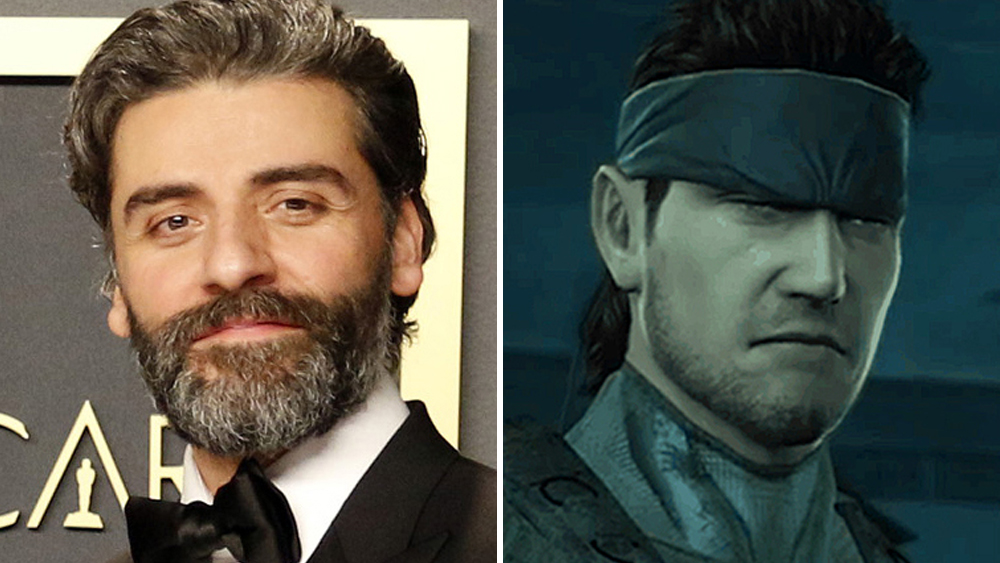
 deadline.com
deadline.com
Oscar Isaac To Star As Solid Snake In Sony’s ‘Metal Gear Solid’ Movie
By Justin Kroll
Justin Kroll
Senior Film Reporter
@krolljvarMore Stories By Justin
Oscar Isaac and 'Metal Gear Solid's Solid SnakeMega Agency; Konami
EXCLUSIVE: Sony’s long awaited Metal Gear Solid adaptation looks to have gained some major momentum as sources tell Deadline that Oscar Isaac is attached to play Solid Snake in the Jordan Vogt-Roberts film. The movie is currently in development at Sony Pictures with Vogt-Roberts on board to direct.
The film is based on the Metal Gear Solid video game created by Hideo Kojima and published by Konami. The script is written by Derek Connolly. Avi Arad is producing. Peter Kang is the executive overseeing for the studio.
The game was first launched on PlayStation in 1998 and follows Snake, a soldier who infiltrates a nuclear weapons facility to neutralize the terrorist threat from Foxhound, a renegade special forces unit. The game has received acclaimed on many fronts but its story telling that has a cinematic feeling always made it seem like a movie adaptation was inevitable.
https://deadline.com/2020/11/hiroyuki-sanada-brad-pitt-sonys-bullet-train-1234634717/
Given Isaac’s extremely busy schedule, a production start date is still unknown but his involvement makes this property a high priority for the studio going forward. As for Isaac, Metal Gear Solid could give him another major franchise having already starred in the most recent Star Wars franchise.
Even as the industry slowly gets back into production due to the COVID-19 pandemic, Isaac has been busy setting his future slate in recent months. He is set to star in HBO’s Scenes From A Marriage opposite Jessica Chastain, followed by playing the title role in Marvel’s Moon Knight for Disney+.
Isaac will next be seen in the much-anticipated reboot of Dune and Paul Schrader’s The Card Counter. He is also set to star in and produce the adaptation of Brian K. Vaughn’s Ex Machina comic retitled The Great Machine and star in Barry Levinson’s Francis And The Godfather, alongside Jake Gyllenhaal.
Isaac is repped by WME, Inspire Entertainment and Mitch Smelkinson at GGSSC. Vogt-Roberts is repped by UTA, manager Tom Lassally at 3 Arts, and attorneys Allan Werthiemer and Andy Gawker.


Oscar Isaac To Star As Solid Snake In Sony’s ‘Metal Gear Solid’ Movie
EXCLUSIVE: Sony’s long-awaited Metal Gear Solid adaptation looks to have gained some major momentum as sources tell Deadline that Oscar Isaac is attached to play Solid Snake in the film, whic…
Oscar Isaac To Star As Solid Snake In Sony’s ‘Metal Gear Solid’ Movie
By Justin Kroll
Justin Kroll
Senior Film Reporter
@krolljvarMore Stories By Justin
Oscar Isaac and 'Metal Gear Solid's Solid SnakeMega Agency; Konami
EXCLUSIVE: Sony’s long awaited Metal Gear Solid adaptation looks to have gained some major momentum as sources tell Deadline that Oscar Isaac is attached to play Solid Snake in the Jordan Vogt-Roberts film. The movie is currently in development at Sony Pictures with Vogt-Roberts on board to direct.
The film is based on the Metal Gear Solid video game created by Hideo Kojima and published by Konami. The script is written by Derek Connolly. Avi Arad is producing. Peter Kang is the executive overseeing for the studio.
The game was first launched on PlayStation in 1998 and follows Snake, a soldier who infiltrates a nuclear weapons facility to neutralize the terrorist threat from Foxhound, a renegade special forces unit. The game has received acclaimed on many fronts but its story telling that has a cinematic feeling always made it seem like a movie adaptation was inevitable.
https://deadline.com/2020/11/hiroyuki-sanada-brad-pitt-sonys-bullet-train-1234634717/
Given Isaac’s extremely busy schedule, a production start date is still unknown but his involvement makes this property a high priority for the studio going forward. As for Isaac, Metal Gear Solid could give him another major franchise having already starred in the most recent Star Wars franchise.
Even as the industry slowly gets back into production due to the COVID-19 pandemic, Isaac has been busy setting his future slate in recent months. He is set to star in HBO’s Scenes From A Marriage opposite Jessica Chastain, followed by playing the title role in Marvel’s Moon Knight for Disney+.
Isaac will next be seen in the much-anticipated reboot of Dune and Paul Schrader’s The Card Counter. He is also set to star in and produce the adaptation of Brian K. Vaughn’s Ex Machina comic retitled The Great Machine and star in Barry Levinson’s Francis And The Godfather, alongside Jake Gyllenhaal.
Isaac is repped by WME, Inspire Entertainment and Mitch Smelkinson at GGSSC. Vogt-Roberts is repped by UTA, manager Tom Lassally at 3 Arts, and attorneys Allan Werthiemer and Andy Gawker.
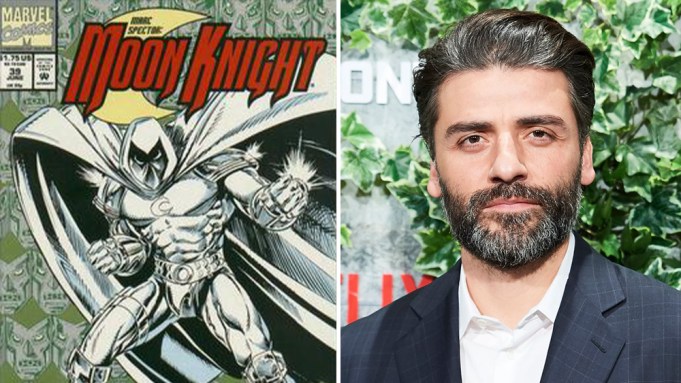
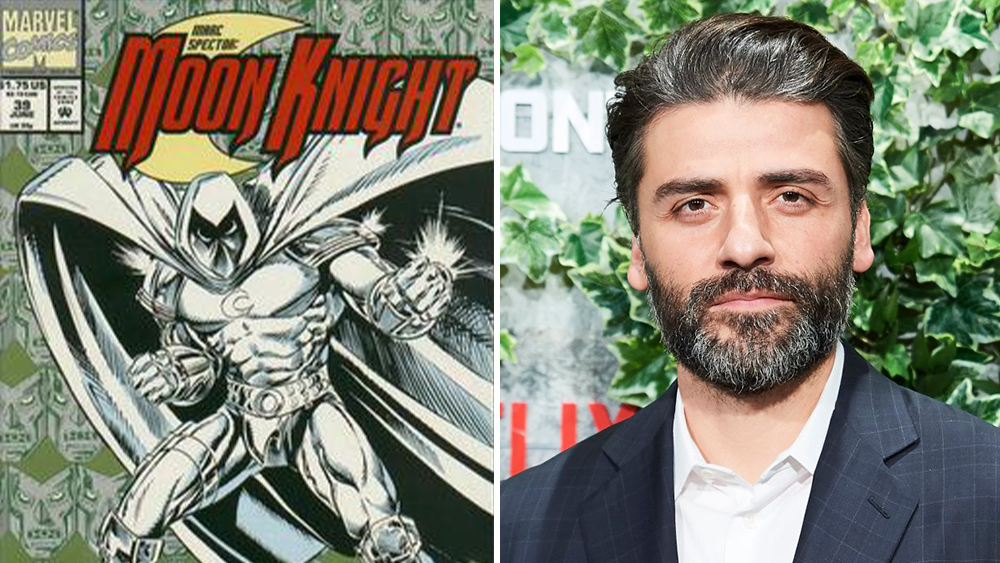
‘Moon Knight’: Oscar Isaac Tapped To Star In Marvel And Disney+ Series
With his time in the Star Wars franchise coming to an end, Oscar Isaac sets his sights on the Marvel Cinematic Universe. Deadline is hearing he is in negotiations to star as the title character in …
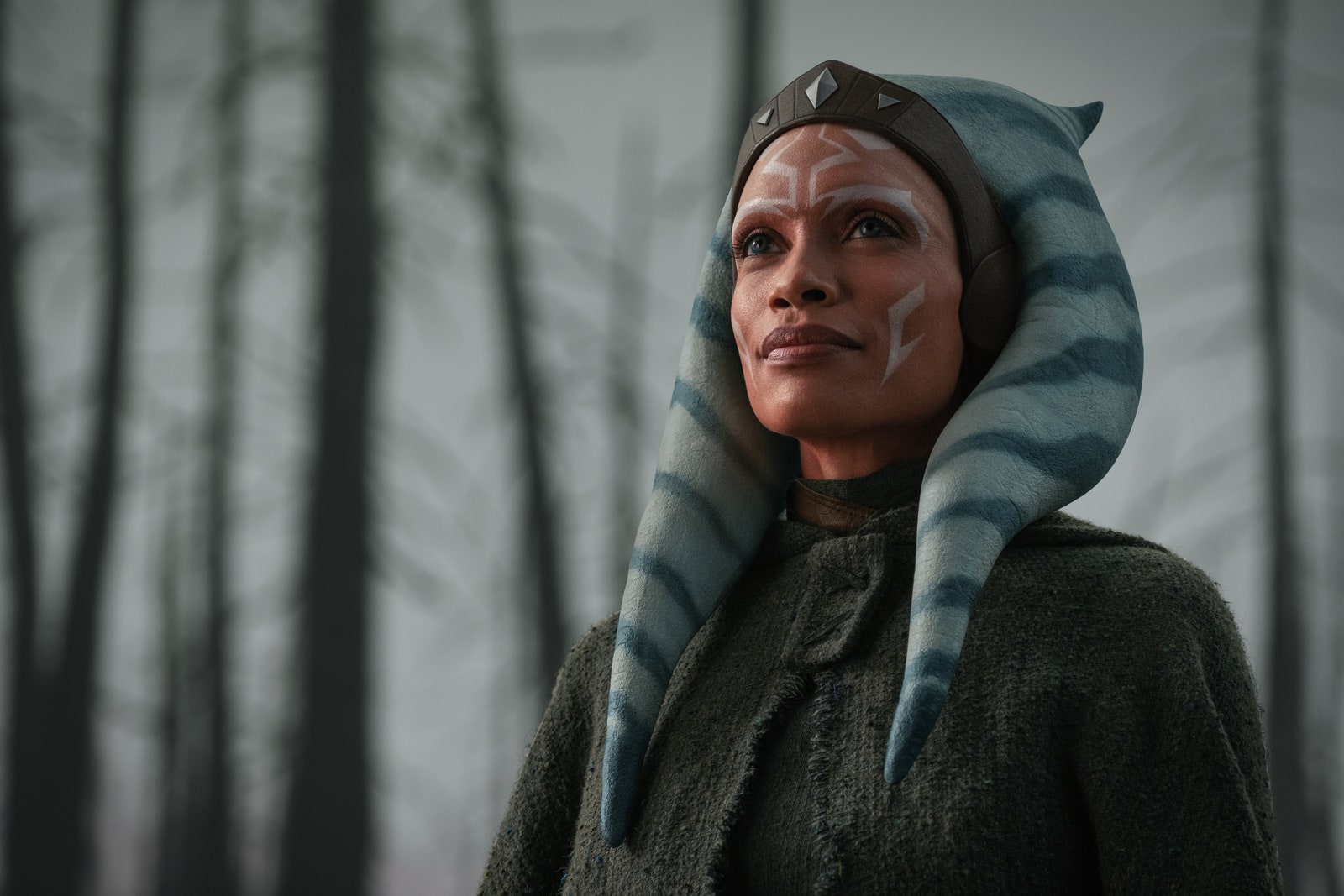
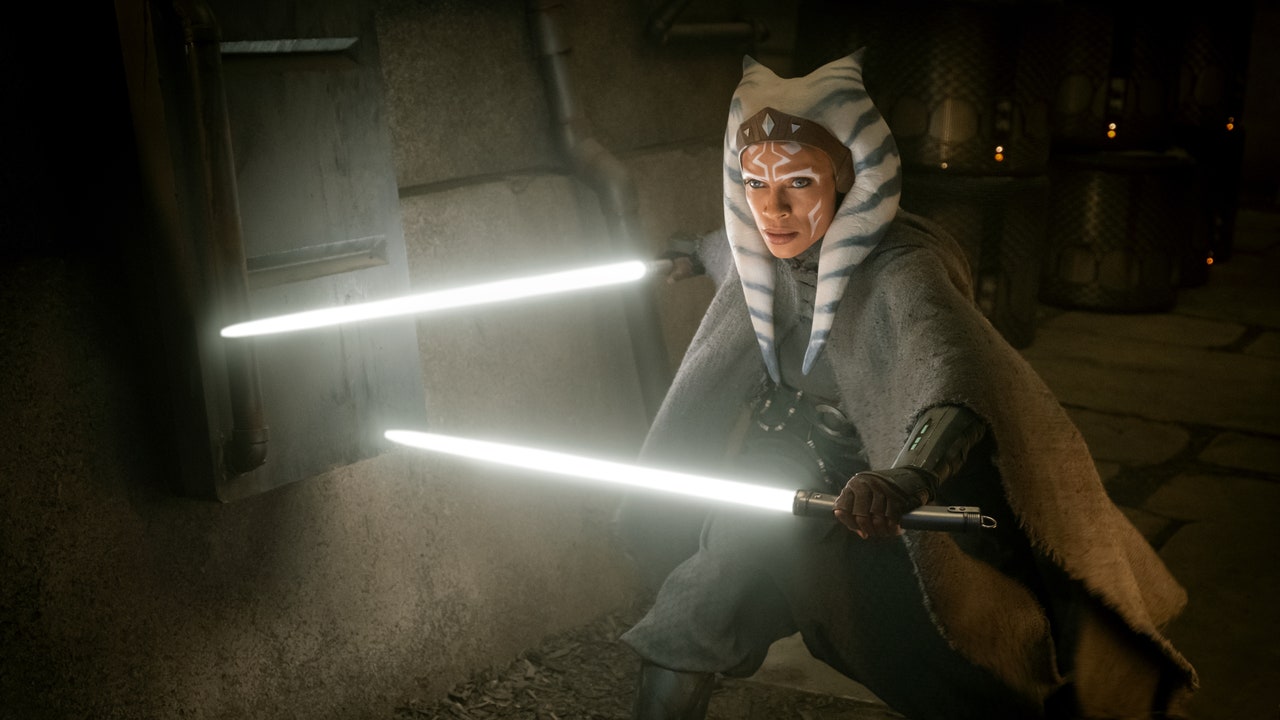
‘The Mandalorian’: Rosario Dawson Tells All About Ahsoka Tano
The actress and writer-director Dave Filoni discuss bringing the animated hero to live-action, Baby Yoda’s name, and real-life controversies and influences.
The Mandalorian: Rosario Dawson Tells All About Ahsoka Tano
The actress and writer-director Dave Filoni discuss bringing the animated hero to live-action, Baby Yoda’s name, and real-life controversies and influences.
BY ANTHONY BREZNICAN
NOVEMBER 30, 2020
Rosario Dawson is Ahsoka Tano in THE MANDALORIAN season twoJUSTIN LUBIN
- https://www.facebook.com/dialog/fee...&utm_brand=vanity-fair&utm_social-type=earned
- https://twitter.com/intent/tweet/?u...on Tells All About Ahsoka Tano&via=VanityFair
- https://www.vanityfair.com/hollywoo...on-dave-filoni-mandalorian-ahsoka-tano-grogu#
Star Wars fans have likely all seen the photo of George Lucas on the set of The Mandalorian, cradling Baby Yoda like a proud grandfather, but there is something about that slightly blurry snapshot that they don’t know. Just out of frame stood another beloved galactic figure who until then had only existed in animation—Rosario Dawson as Ahsoka Tano.
Her casting was long rumored online, but no one else got to see her as the Force wielder with the blue and white headtails and twin lightsabers until last Friday’s new episode of the Disney+ series. That chapter—“The Jedi”—not only unveiled the live-action, grown-up version of the The Clone Wars and Rebels hero, but also dropped new information about Baby Yoda’s past and hinted at another fan-favorite Star Wars figure, Grand Admiral Thrawn, who may appear in the future.
Dawson and Dave Filoni, the writer-director of the episode who developed Ahsoka with Lucas during their years working together in animation, spoke exclusively with Vanity Fair about the biggest revelations—from the Child’s name and backstory, to the reason for setting the story on a wildfire-stricken planet. Dawson also addressed a lingering personal controversy that has concerned many fans of Ahsoka.
WATCH NOW:
Jacob Elordi Teaches You Australian Slang
First, we start where all Star Wars tales begin:
Rosario Dawson is Ahsoka Tano in THE MANDALORIAN, season two.JUSTIN LUBIN
A Long Time Ago
Vanity Fair: Where did it begin with Rosario playing Ahsoka? When did this concept first come to you both?
ADVERTISEMENT
Rosario Dawson: Actually it first came from fans online. Someone tweeted me and fan-cast me. I retweeted back and I was like, “Absolutely, yes please” and “#AhsokaLives.” And apparently that got the attention of someone who has been doing the Star Wars press for years. She forwarded it to Dave Filoni. That kind of started a whole thing. I was like, “Oh my goodness, did I just get fan-cast in something?” And then nothing happened.
Dave Filoni: That was the first time and I looked at Rosario and I thought, Huh. Yeah, I think maybe she would make a good Ahsoka. I just kept loosely aware of what she was up to, and she was doing some Marvel things. But I’d seen interviews with her where she would talk about wanting to play the character and her excitement, so it was interesting.
People might assume that when she was asked that, it was already in the works.
Filoni: Oh, no. Not at all. I was still trying to figure out how to get off Tatooine myself at that point. But when I started working with Jon [Favreau], I’d bring up the character and he’s like,
“Well, who are you thinking of playing her?” I said, “Well, Rosario Dawson’s top of my list,” and he’s like, “I know her!” So immediately that starts to fit really well.
Dawson: People have been fan-casting me on all kinds of things, like She-Hulk and stuff. And I always just think it’s really fun, because I get to see myself in different kinds of art. But then I got a FaceTime call from Jon Favreau and Dave. They were building out The Mandalorian, and I got to have a behind-the-scenes look at visuals and concept [from] what they were planning on doing with this second season.
When was this?
Dawson: They were just about to drop the first one, and they had all of this art that had me as Ahsoka. They had already been preparing, knowing that they wanted to have her be a part of a story in the second season. They’d just been visualizing me in this role that whole time, and it was mind-boggling.
What was it like seeing yourself in concept art as this alien warrior?
Dawson: I actually was glad because I had really bad reception, and so I ended up just going to the audio. So I was pacing and jumping up and down, trying to keep really cool in my voice, but I was freaking out. I mean, this is real Star Wars—the font, the look, the art, the everything, and my face in there. I just, I couldn’t. I was beside myself, and they were asking, “Do you want to do this? I mean, we appreciate if it’s not something you want to do.” And I was like, “Oh, no, no, that would be cool, actually. I think we could maybe work this out.” Trying to play it cool, but I was sweating.
LEFT, FROM GETTY IMAGES; RIGHT, FROM EVERETT COLLECTION.
The Anakin Connection
So you were a fan already?
Dawson: I’d seen some of Clone Wars, and once I got the role, I actually went and started watching everything in its order. I started seeing a lot more of the connective tissue. There was always that conversation around Ahsoka leaving the Order, and that being a major trigger for Anakin going toward the Dark Side. It was just really incredible that the character started off as a teenager, you know?
ADVERTISEMENT
Ahsoka stands out as the first lead female Jedi in Star Wars storytelling. What did you connect with personally?
Dawson: I found it so fascinating that there was this whole other world that existed in the animated series, and this young girl was the heart of that space. I had a particular kind of interest in her and in that character because when I first started acting at 15, I did this movie, Kids, and I got paid like $1,000 to work on it. When the movie came out, I decided at 16 that I wanted to continue pursuing acting. My dad’s mom said, “Well, if you’re going to do that, and you’re 16 years old, then you need to study acting,” and put me in Strasberg. And it happened to be that summer when Hayden Christensen was in—we had the same class.
And you later worked together, right?
Dawson: We ended up doing this movie together years later called Shattered Glass, and I always just thought it was really cool that I knew someone who was not just in Star Wars but played Anakin Skywalker. Ahsoka was his Padawan, so when the fan-casting came out, I just thought it was pretty wild that I visually connected to this character from being this teenager who met this actor who ended up being this great character. I don’t know, it just felt like the Force was at play.
Filoni: When I was first exploring the possibility of directing live-action, I asked [Lucasfilm president] Kathleen Kennedy about casting and when you knew someone was right for a part. She thought about it and said, “You just know.” And she was right. When I met Rosario, I just knew she was right for Ahsoka. Yes, there was the tweet and her interest in the part; yes, she has been in action movies and is a huge fan of sci-fi and fantasy stories; yes, she knew Hayden Christensen and pictures of them together look like Anakin and Ahsoka. But in the end, when I met her and we talked, I just knew.
Speaking of casting, can you share any insights into choosing stunt legend Diana Lee Inosanto as the robber baron Magistrate and Michael Biehn as her enforcer?
Filoni: I needed the performance from the Magistrate to challenge Ahsoka and be someone that could go toe to toe with her instantly. Diana brings such experience and knowledge about martial arts to her performance. The instant she takes up the Beskar spear you can tell that she is a lethal opponent. For me, as a director, it was a great advantage to have someone of Diana’s skill and experience with fight choreography as one of the main players, especially for the final battle in the courtyard.
ADVERTISEMENT
And Biehn? He’s had his share of battling in both space and the Old West.
Filoni: That moment came when I penned this script and created an experienced gunslinger to go up against Mando. Michael’s experience and understanding of the language of Westerns were really valuable on set. He had a whole philosophy about how his gunslinger would attempt to go up against someone like Mando, which we wove into his scenes. He thinks of every detail, even the number of times he would fire his weapon. In both Michael and Diana I had two people who knew their characters; they brought so much to the roles through their personal skills and experiences. As the villains of the story I felt we had a good matchup of Mando and Ahsoka versus the Magistrate and her gunslinger.
Creating Ahsoka’s Look
Can you describe the process of adapting Ahsoka from drawings and animation to real life? What has to change?
Filoni: It was a pretty amazing thing as we designed the costume and worked out all the details of that. Everything got considered to an unbelievable degree—the headtails, the horns, I can’t even tell you. It’s hard. It’s so rare a person in my position from animation gets to craft and guide the character’s jump to live-action.
Dawson: What I love about the Togruta is that they have these facial markings, but they’re all different on all of the different women that we’ve seen. In the cartoon it almost looks like a face paint, but [Filoni] really wanted it to come off as very natural.
Filoni: Many tests were done, screen tests, because within the Volume [The Mandalorian set that creates backgrounds on a giant digital screen] it will tend to lean magenta. You have to worry about how a character like Ahsoka would look because the temperature that we have her orange could be dramatically different in the Volume than in stage shots. So there were tiny little considerations that had to be made and adjusted.
Dawson: They definitely wanted [the makeup] to be very warm and natural. In the animation it’s very different and bold, and the lighting is so different. But in the real world they wanted it to have a different kind of energy. It was fun to be able to see how that shifted when she had the lightsabers closer to her face, how you see it and feel it differently in the different lighting and the smoke.
Rosario Dawson is Ahsoka Tano in THE MANDALORIAN season twoFRANCOIS DUHAMEL
How do you make sure that the makeup and headpiece don’t get in the way of the performance?
Filoni: Yes, it’s tricky. That was one of the big considerations. Performance-wise I don’t want her to be lost in all of this headgear and makeup, but she definitely is not. I kept things subtle in some ways with the markings. I mean, the funny thing is that the white markings over the brow are always done in animation to give an eyebrow performance. I didn’t want a brightly saturated character. Again, in animation it works, but in live-action I think it works another way, and so you just have to play with the values and see.
There’s a lot of lightsaber fighting in this episode too. Was that a consideration with the headtail prosthetics?
Dawson: Everything was pretty firmly on. Everything was built specifically to my skull and body, and the headband that she has on with the tails actually clips in the back and holds it in place. We were doing stunts in it and everything, and it wasn’t going anywhere.
ADVERTISEMENT
What else had to happen as part of the transformation into Ahsoka?
Filoni: I said, “Well, Ahsoka’s eyes are blue and yours are not, but I don’t want you to worry about it. If you don’t want to go for that, we can just say that in this version they’re not.” And Rosario insisted. She’s like, “No, no, no. Let me try it.”
Dawson: I remember when I put the contacts on, that was when it really solidified—the headpiece, the tails, the shape, the coloring, everything. Doing the face marking, doing my skin, wearing the costume, all of that was absolutely incredible. But I still kind of felt like I was in cosplay. The second the contacts went in, it was Ahsoka. I felt like I disappeared.
George Lucas Encounter
We heard a lot of stories about Werner Herzog being obsessed with Baby Yoda when he was on the show last season. I wondered, Rosario, what’s it like to be around…I guess after this episode we can call him Grogu now? Maybe I should call him the Artist Formerly Known as Baby Yoda?
Dawson: [Laughs.] It built it up for me. Like, what is it going to be like when I get on set? And actually some of the guys who worked with Grogu were folks I had met before, because they worked on Men in Black II with the worm guys. So it’s like, these people have been doing this for a really, really long time, and there’s several different guys, and one controls the ears, and the other one the eyes, and the arms are moving. You’re holding this adorable, unbelievably cute, tiny little creature, and it’s blinking, it’s looking at you, and its mouth is moving, and its ears are moving, and it’s so soft, the little hairs on its head. [Sighs.] I mean, it’s unbelievable. I completely was with Werner. I understood what he was going on about.
You also got to meet up with George Lucas on set.
Dawson: I actually got to be there on the day that there’s that photo. Someone took a picture of George Lucas holding Baby Yoda. I’m still calling him Baby Yoda—Grogu! I was there that day. I was all dressed up, I was just off to the side of that photo, all done up as Ahsoka. And I remember it broke the internet when that picture came out. It was just an amazing, amazing moment, and we were all beside ourselves. It was definitely very “geek out.”
What was your experience with George?
ADVERTISEMENT
Dawson: I was definitely nerve-racked, and it was great to be there with him and Dave. I mean, it’s a lot of pressure. But it was also really fun. Both of them were looking at me but they weren’t, you know what I mean? They were looking at their imaginations come to life.
Ahsoka’s Spirit
Fans have watched Ahsoka grow up on The Clone Wars, they’ve seen her go off on her own, seen her fighting as a lone wolf in Rebels. What did you want to reveal about her at this point, much later in her life?
Filoni: She is, for lack of a term, a master, because she’s largely an independent at this point. I play her much more as a knowledgeable knight. A wandering samurai character is what she really is at this point. I’ve always made comparisons to her heading toward the Gandalf stage, where she is the one that has the knowledge of the world and can help others through it. I think she’s reached that point.
How would you describe her overall journey?
Filoni: We saw her basically hit the scene as a Padawan: young, and naïve, and brash, and aggressive. Then, in Rebels, she’s more of a traditional knight, trying to figure out how to fight a war. There’s a lot of hesitation around what she wants to be and who she can be and how her life’s been guided. I think that now I’ve taken that a step further. When you see this version of the character, she’s world-weary from everything that she’s experienced and lived through. She’s seen so much happen in her time.
The episode is called “The Jedi,” but Ahsoka’s whole identity is based around leaving the Order.
Filoni: Yeah, I think something fans like about the character is that she’s rather complex. They all focus very hard on the line, “I am no Jedi,” from Star Wars: Rebels, but it’s undeniable that she’s trained by the Jedi. I think to most observers she is very Jedi to them. I would argue in some ways—by being so selfless and rejecting a lot of paths that would have given her power—she’s more Jedi-like than even some characters who claim to be Jedi.
Dawson: I love that she is this wanderer character who is going to just do good in the universe. The Jedi Order has disappeared in many ways, it’s so fractured, and so many people are targeted. She’s lost so much. She had left that Order under duress, and she’s just been finding her way. And since the very beginning, the way that has been pulling her is to be vigilant, and to be brave, and to be wise, and to always have her eye set on rooting out evil. And I think that’s one of the reasons why so many love her. It’s why I love her. She represents truly the best of the Jedi, you know?
Ashley Eckstein gave voice to the character for so many years. What impact did she have on the live-action version?
Dawson: Ashley did a remarkable job. You’ve seen this character first come into our hearts and minds as a teenager and then evolve, and Ashley has been there the entire way. Seeing how her voice changed, how her energy changed, and to hear the maturity develop in her was just so powerful and so beautiful. I studied it like crazy and tried my best to honor that. And it was just incredible to be able to have such an in-depth performance to source.
ADVERTISEMENT
Filoni: Ashley’s fantastic, and I think the character that she played, Ahsoka as the young Padawan apprentice and then going into Rebels, obviously made its mark—plus the animation team who made this Padawan such a household name among Star Wars fans. It’s a pretty magic thing and it speaks to how well crafted the character is by that group. I wrote pretty much all of her character from when she’s 14 all the way up through this, and normally someone in my position wouldn’t get to do that. It would have changed hands several times.
A Real-Life Controversy
Ahsoka does mean a great deal to people, and they’re deeply invested in who she is. So, Rosario, I want to ask you about something that’s outside of this story of The Mandalorian, and that’s the concern in the fandom about a lawsuit that was filed against you last year by a longtime family friend. The claim accused you and other family members of anti-trans bias, and you’ve called the lawsuit false and baseless. But what do you say to those Star Wars fans who hear this and believe the worst—that you are transphobic?
Dawson: Well, firstly, I just want to say I understand that, and why people were concerned, and are concerned. I would be too if I heard some of those claims. But I mean, as we’re seeing right now in these past months, and just recently, actually, the truth is coming out. Every single claim of discrimination has been dismissed by the person who made them, and as you’ve said, the fact that this is coming from someone I’ve known since I was a teenager, the better part of my life, and who my family was trying to help as we have many times in the past, it really just makes me sad. But I still have a great empathy for him.
Court records show 18 of the 20 claims were withdrawn voluntarily without a settlement, and his lawyer left the case. Two counts remain alleging a physical altercation, and a judge will rule on whether that can move forward next month. There are people that would say, “Well, this is just another example of a wealthy, famous person overpowering the system.” So what would you say to those people who are unconvinced, both about this case and about what you actually believe about trans people?
Dawson: The reason that all of the discrimination claims were dropped is because they didn’t happen. I was raised in a very inclusive and loving way, and that’s how I’ve lived my entire life. I’ve always used my voice to fight for, lift up, and empower the LGBTQA community, and use my platform to channel trans voices, in fiction and nonfiction work that I’ve produced and directed. So I feel the record is really clear.
The Personal Elements
For the roles that mean the most to actors, they often talk about carrying a part with them beyond the performance. You put yourself into a character, and then you take a little with you. What would you say you take home from playing Ahsoka?
Dawson: That the journey isn’t always easy, that it isn’t always clear, that this isn’t about magic, you know? To make things how you want them to be, it takes work and diligence and love to really make the difference. And I believe everybody has those powers, and everybody has to continue trying. It’s not like you become a Jedi and then that’s it, you’re good. They have to keep making that choice.
ADVERTISEMENT
Dave, in writing the episode, you set it on a forest world that has been turned into a scorched wasteland. I expected to find Ahsoka somewhere lush, like the first moon of Endor or Yoda’s swamp world of Dagobah, but instead you brought us to a cinder.
Filoni: In all honesty, [that] just comes out of my own personal experience living in an area [in Northern California] where there are fires. My wife and I have been evacuated three of the last four years, every fall. So I guess I’m just telling a story and can some way control it for myself. But yeah, I’ve known a lot of people that are terribly affected by it, and it’s a powerful, powerful thing.
It’s beautiful in its way, but also terrifying.
Filoni: I just thought it would be really haunting. There is a foreboding feeling, I think, through the episode and what transpires in it, so it’s got its magic moments. Where you see life in the sets and where you don’t is part of the story. Most of the sets are dead and burnt, but then when you encounter Ahsoka there’s a little bit of green and life around her. That’s all just emblematic, little visual cues that you can tell to reinforce story points.
Is it a blessing or a curse for Ahsoka to have these powers?
Dawson: It’s a gift, but it’s one that requires discipline. And we all have gifts, but we’re not all very disciplined. And I think that she is such a strong reminder of what that looks like to be that steadfast, to be that clear, and not to do it because she’s got all the support and love and company, but because she knows deep inside of her this is who she is, and what she is meant to do, and this is her purpose, and she is going to honor that every single day and choose it every single day, even when it’s hard.
Or not. She advises stepping away from the Force completely in this episode, when it comes to the baby.
Dawson: You saw that with Anakin’s story, and you see that with Ahsoka as well. She recognizes that. That’s why she brings it up with the Child as well. He has these incredible abilities, and you’ve seen him be able to wield the Force. He’s been trained in the Jedi Temple. But as she says, because of his attachment, it makes him vulnerable to fear, which makes him vulnerable to anger, which means that he could be dangerous. That means maybe we should just let his Force sensitivity just wane, you know?
Baby Yoda Revelations
COURTESY OF LUCASFILM
What’s the story behind Grogu—the name of our little green friend?
Filoni: The name has been around for a while. Jon told me early on in season one what it would be, which made me start to think about how people could learn the name. This gave me the idea that Ahsoka, who is very compassionate, would be able to connect with the Child, and that without words they could probably communicate through memories and experiences. Through that connection, she learns the name and then tells Mando and the audience.
Like Rey in The Force Awakens, the Mandalorian doesn’t really know the full Star Wars story. He has no idea who Yoda is. Is that why you turned to Ahsoka for this, so she can say, “Oh, yeah. I know what this thing is.…It’s a baby Yaddle!”
Filoni: No, that would have been the best moment ever. That’s the way I should have gone with it. [Laughs.] Again, I thought one of the most compelling things about introducing Ahsoka is that she is one of the few, few people that we could encounter in a story and she would say, “All right. I met someone like him. I’ve only ever seen one other being like this.” I had to stop myself from doing something ridiculous like have her say, “Is that a Yoda baby?” It almost demands to be said.
ADVERTISEMENT
She invokes his name, but there’s another allusion…
Filoni: She sees this child and names the name “Yoda” for [the first time] in our show. [Composer] Ludwig Göransson does a really masterful thing where the music, just for a moment, becomes John Williams’s “Yoda’s Theme.” Those are those little overlapping moments that I just love, and it’s why I’ve always insisted on using Star Wars music so fleetingly because you don’t want that unless you’re talking about that character. It’s their music. We had an opportunity to just give it a little grace moment.
It’s their spirit, right, when that music plays?
Filoni: Yeah, the feeling of it. It’s just an acknowledgement to that great performance by Frank Oz and the great character design. There’s no way that the name Yoda Baby wasn’t going to happen just given the stature of Yoda himself, so I think it’s a nice nod to the history. We can honor people who really put this thing on the map.
Why was now the right time to reveal the baby’s backstory and origin?
Filoni: I felt that if anyone would know or understand the Child’s history it would be Ahsoka. She has such a long history as well. By having her relate the story it also helps the viewer to understand some of her own backstory. This is similar to when Obi-Wan tells Luke about his father’s history. Through the story about Anakin, you are getting a look at Obi-Wan and his backstory as well. A lot of the campfire scene, as I call it, is shaped around that scene between Obi-Wan and Luke in A New Hope.
Ahsoka fears the worst, which is how we get her line to the Mandalorian that hints at Anakin’s turn into Darth Vader.
Dawson: She knows what could happen if you go even remotely to the Dark Side. I love that she throws a line in this about Anakin. She knows what could happen even to “the best of us” when fear and anger take root, and she’s so vigilant about that. She is a lonely character, I think. But the Force is compelling her to just continue to do good.
Filoni: She wants to do good and help people, but rather than do it like the Jedi did, which was all wound up in the politics of the Republic, she’s doing it on an individual basis in the galaxy. Plus, she has a larger quest, which is always more fun when they have a larger quest.
ADVERTISEMENT
That quest, we learn, is a search for the villain Grand Admiral Thrawn. The last time fans saw Ahsoka was this spring's finale of The Clone Wars, but in the actual Star Wars chronology, the last time we saw her was at the end of Rebels, venturing off with Sabine Wren to find Ezra Bridger, who vanished along with Thrawn. Where does that scene fit in with where we find her in The Mandalorian?
Filoni: Right. But no, it's an interesting one… That's not necessarily chronological. I think the thing that people will most not understand is they want to go in a linear fashion, but as I learned as a kid, nothing in Star Wars really works in a linear fashion. You do [Episodes] Four, Five and Six and then One, Two, and Three. So in the vein of that history, when you look at the epilogue of Rebels you don't really know how much time has passed. So, it's possible that the story I'm telling in The Mandalorian actually takes place prior to that. Possible. I'm saying it's possible.
This Q&A has been edited and condensed from two separate interviews
Something along the lines of this25 years after the Clone Wars
Star Wars: The High Republic - Wikipedia

that is way before and there isn't that much jedi stuff involved but there is a link. It takes place on a certain planet with local affairs.
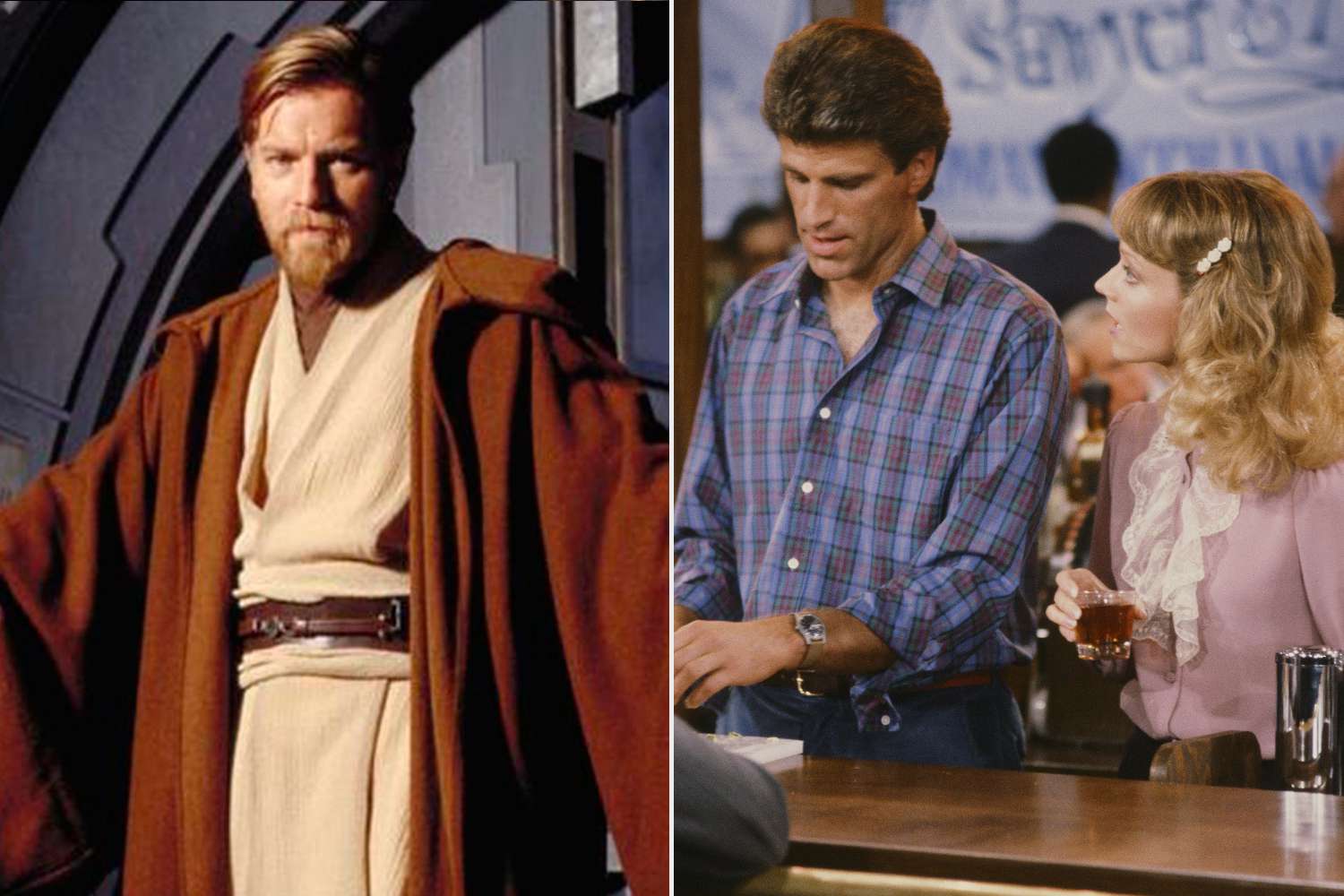
'Late Show' shares 'Star Wars'-style 'Cheers' theme to mark Obi-Wan series filming in Boston
'The Late Show' dropped a 'Star Wars'-themed riff on the 'Cheers' theme song to mark the Obi-Wan Kenobi series filming in Boston.
Anakin and Snips???

John Boyega is ready to be a force, both onscreen and off
John Boyega discusses taking on Steve McQueen's 'Red, White and Blue' and becoming a "voice of service."ew.com

John Boyega is ready to be a force, both onscreen and off
By Derek Lawrence
December 02, 2020 at 12:45 PM EST
ADVERTISEMENT
SaveFBTweetMore
CREDIT: S GOODWIN/AMAZON STUDIOS
John Boyega has found his voice.
Back in June, as protests broke out around the world following the death of George Floyd, the 28-year-old British actor attended such an event in London, where, with no prior notice, he was handed a megaphone and asked to speak. A visibly emotional Boyega declared, “Black lives have always mattered. We have always been important. We have always meant something. We have always succeeded regardless. And now is the time. I ain’t waiting." He would also add, "I don’t know if I’m going to have a career after this but, f— that," prompting filmmakers like Jordan Peele and Rian Johnson to show their support.
Shortly thereafter, in a candid interview with British GQ, Boyega slammed how the Star Wars franchise handled his character, Finn, and those played by other actors of color. “Like, you guys knew what to do with Daisy Ridley, you knew what to do with Adam Driver,” he said. “You knew what to do with these other people, but when it came to Kelly Marie Tran, when it came to John Boyega, you know f--- all. So what do you want me to say? What they want you to say is, ‘I enjoyed being a part of it. It was a great experience…’ Nah, nah, nah. I’ll take that deal when it’s a great experience."
Now, after spending the last three years wrapping up his Star Wars run and starring in the sci-fi blockbuster Pacific Rim: Uprising, Boyega is saying something with this art, too. The actor-producer was at a career crossroads when Oscar-winning filmmaker Steve McQueen (12 Years a Slave) came to him with Red, White and Blue, one of the five original films in McQueen's "necessary, important, and urgent" Small Axe collection.
Premiering Friday on Amazon Prime Video, the latest installment tells the true story of Leroy Logan, a young forensic scientist who decides to join the police force after his father is assaulted by officers. Believing he can make change from within, Logan faces the wrath of his father and fellow cops.
EW spoke to Boyega about having a personal connection to Red, White and Blue, expanding the global conversation of race, and becoming a "voice of service."
ENTERTAINMENT WEEKLY: What was it about Red, White and Blue that drew you in?
JOHN BOYEGA: I just think it was an interesting story. I grew up here in London and I still live here, so to be able to play a man who is very important to our community and who has done especially so much for the young people. I’ve seen his work, because growing up I had friends who were mentored by him, so I know firsthand the positive impact that he’s had on various different lives in the U.K. So to be able to embody him, but to embody him at a time where he hadn’t come into the Leroy Logan that we know today. He was a young man in a very racist society and institution who was trying to navigate that space without the necessary support, and that interested me. And on top of that, Steve McQueen. I was at a crossroads, I had just finished a franchise, and so I just wanted to know what I could potentially do next and this felt like a great option.
So much of your last few years had been spent working on these giant special-effects films that are set in these futuristic worlds, so did you enjoy getting to come back down to earth so to speak? Do this really human story on a human level? Even though I did enjoy Red, White and Blue finding a way to make a Star Wars joke about you joining the force.
Right? Being in a scene, thinking, you know we can just force joke this lad. [Laughs] Wrong project! But I like to explore, that’s why between Star Wars VIII and Star Wars IX I did Detroit, or the reason why I’m playing a frantic, messed up lawyer in Naked Singularity. I just like jumping into different types of roles and characters and people.
You mentioned your friends being mentored by Leroy growing up, but, once you landed the role, did you get a chance to talk to him? If so, what were those conversations like?
Yeah, it was brilliant. We actually met up and had a nice long sit-down and we just spoke about his experience and were able to relate. Because I had a lot of experience in the youth clubs and school programs out here in South London and Leroy’s got a lot of experience with working with young people here, and we are just able to be like, “Yo, I’ve been to that institution, have you been there too?” And that was a connection that way, but then about getting into his mind: why, why make this decision, why let go of being a scientist and a stable life and a baby on the way and then decide to join the police force and put yourself in harm’s way? And so understanding his thinking was very, very cool.
Once he laid it out for you, how easy was it to get his mindset and understand this decision he made to pursue a new path that was controversial to many around him?
I definitely understand the perspective. And I don’t think everyone is made for it. I think we all have our different calling. But I don’t think that’s something that doesn’t help us, to have Black individuals on that side, who can add perspective and add safety to us and an understanding; it feels better than to have alien faces who perhaps won’t be able to relate and who could see things in the way that could lead to a negative outcome. So I understood those choices and I understood the conflict of it. It’s just real tricky. I know my job doesn’t need to conflict with my position, socially, whereas with Leroy Logan, it’s a hard pill to swallow.
I couldn’t help but be taken by this quote from Leroy in Red, White and Blue: “I just feel like someone’s got to be the bridge, and when you’re doing that, you just realize you’re alone.” I can’t imagine how isolating that must feel for someone to take that on. So, for you, what was it like playing the weight of that?
I felt the change in that line, and that was such a natural scene to film. Steve kind of left us alone in this café and had us have this conversation. For me, I relate to that point as Leroy. Like I understand why this guy is saying it, because he is alone, statistically. How many Black police officers are in the streets? And they definitely didn’t have enough to give him a Black partner or whatever it is he needed for those specific communities. And, in a sense, he became the poster boy, too. It’s a very isolating experience, so I understand why he said that and the loneliness that he felt in that moment, and that’s what I played.
We so often see the exploration of race and racism in America played out on the big screen or on television. As you mentioned, you even did it with Kathryn Bigelow's Detroit. But what’s it like exploring race in the U.K., which are stories that don't make it over to the States as much? I talked to Steve about this and his big thing was “America doesn’t have a monopoly on anything, especially not race.”
It definitely helps in expanding the global conversation when it comes to race. And I know America is such a big place, man, you all can stay in the same nation and have two different types of weather. All of a sudden you’re in the mountains of Utah in the snow and then you can say I’m going to a beach vacation and be in Miami. I need to travel out for that because Brighton doesn’t have that kind of color. So if you see how small we are, to be able to then share our stories and to be able to basically remove the veil, and even for African Americans as well to see the, “Oh, these are the similar lines,” it definitely helps in understanding our several different issues as we come up through society.
The headline of this Leroy's story is what he has done and what he has faced, but, to me, the father-son relationship really is the heart of this project. Did you see it that way as well?
I love my father, and I love him in the sense that you know true love, even in some shortcomings that we all have you are still able to grab something positive to learn from it. So with that I understand the love Leroy has for his father. And when Leroy spoke face-to-face with me about his father, you can just see that this guy had a very serious respect for his dad and his dad instilled in him the power to be able to do what he’s doing now. I just think his dad didn’t know that was the direction his son was heading in, but look what his son has achieved now. I’m sure his dad, God rest his soul, would definitely be proud of how far he’s come. So, for me, relating to that father and son dynamic, even in them being in conflict and arguing, just was so true to that father and son experience that some of us have had the privilege to have.
Of all the heartbreaking moments in Red, White and Blue, the one that stuck with me the most is the opening scene, which you’re not even in. It features Leroy as a child being accosted by cops as he’s just minding his own business standing outside his school. He seems so accustomed to it, like it's just part of his daily life. Is that something that you could just inherently relate to?
Oh yeah. Period. It is what it is. I noticed that too when I first watched the scene. I wasn’t there when they were shooting that scene. I actually saw that young kid coming into set to film that when I was leaving; I shot my stuff in the early day, so I took a picture of him quickly and I had to shoot off. But that scene in itself really reflects what it’s like for a lot of people and their experiences, especially here where stop and search is a major issue. And for that to randomly happen and to see someone at such a young age that is so accustomed with that system, how frequently did that happen to Leroy and those around him?
With everything that has been going on this year, something that I’ve been thinking about a lot lately are how prevalent cop shows and movies are. Like every actor of note has played a cop at least once in their career. I know this story is unique in that it's based on a real man and a real hero, but moving forward, considering the continued violence from police towards people of color, will you have any hesitation in portraying a cop?
No, not at all. Because each actor has a different process for consideration of a role, and for me it’s character. If I’m playing a cop in one movie who is conflicted about his position and then in another movie I play a really messed up cop who is essentially head of this like chain gang, those are two completely different people to me, two different roles. Despite the similarities, it’s not enough to make them the same thing. So I would walk into anything that is written well, and even if it was Steve McQueen again, he’s just like, “I’ve got another cop thing." Knowing Steve, it will always be dynamic and different. Hell yeah, I’d definitely be a cop.
Is there something specific that you hope viewers take away from Red, White and Blue?
For me, I think the big thing is about understanding the perspective of the character and the conflicts of the character. Because I feel like stories like this can help us understand our society and sometimes its unfortunate complications. Whereas the news kind of packages news for us to make it simple for us to comprehend, something like this goes into depth of what happened when someone was in that position, the true conflicts that they could possibly face — and it potentially can just make us think. What I’m really curious about is how police officers themselves feel watching it. I have a friend who is an officer and I’m definitely going to be asking her what she feels about the portrayal, so it will be interesting to see her reaction to it.
So much of what Steve is exploring in Small Axe was put in the spotlight over the last few months, between systematic racism within the police to protests for racial equality. Knowing that you had just made a project about many of these same issues, what was it like seeing all of what has recently played out, not just in the U.S., but around the world?
It is surreal. I remember people saying we made the film after the protests or during the George Floyd stuff. It’s like, no, we’re in a pandemic, couldn’t do that. So just knowing that we were onto something energy-wise, that reality would reflect and project and our art would do the same thing back in what has been the craziest year so far, you can’t write that. It’s something that nobody could control. But to see it come out in this way while there are such big, intense conversations just goes to show how much of an issue it is and how much hasn’t changed.
CREDIT: DAN KITWOOD/GETTY IMAGES
You took this moment of time to heart and delivered this really powerful speech at a protest in London that ended up making headlines. When talking to Steve, he thought it was cathartic for you, and he was also very impressed and grateful. For you, afterwards, did it feel cathartic, and what’s it been like seeing how receptive people have been to what you did and wanting to actually hear what you’re saying?
Yeah, definitely. Because you have to understand being in a position where you are privileged, mind you the privilege is quite different because I worked for it and I still spent most of my years struggling like anybody else, your memory isn’t erased. I remember those years and I still have those friends, I still have my family — everybody doesn’t change with you. Things still connect you to that past, and so to be able to relate with that and be a part of the storytelling to push the nuance of that message is very, very important to me, because it helps me identify and support and know when to actually feel motivated by it. Because, essentially, it’s service to people, and if people say, “Okay cool, you are allowed to continue to be a voice of service for us,” then it is a blessing that comes with a responsibility. And so that’s something that I’m in full mode to handle.
Wrapping up, you’ve already done so much in your career, whether it’s starring in these blockbuster franchises or working with these great auteurs like Steve and Kathryn Bigelow, but what do you want to do next? Are there certain things that you are especially interested in pursuing?
There are so many. I just think that I’d like to explore every single genre. I am not closed, even to horror, and horror was something that I didn’t see until I watched It, and then I was kind of like, “Hmm.” [Laughs] So there are so many different things that I’d love to explore. And as a producer that’s given me so much opportunity, because now I can be a part of that development process and I’m seeing the uniqueness of what I’d like to see myself in now in the projects that we get to develop.
I feel like we’ve got to get you into a good rom-com.
Rom-com, oh yes! Absolutely. I love a rom-com, or a romantic drama. Just make sure that woman gives me space on the door. We ain’t doing that, Kate Winslet!
They simply will stop casting him






